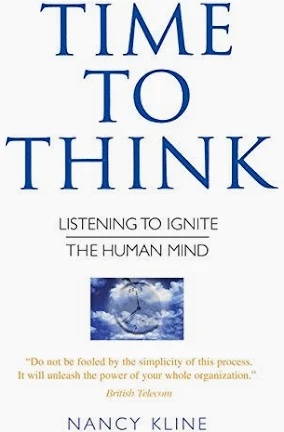It was not without some trepidation that I ran a Diversity Workshop the other week. After all, what could a white, male, Oxford-educated, happily married, middle class, etc etc man possibly have to say of any value on the topic? I don't check my privileges every morning, partly because it would take too long...
Fortunately, the workshop does not rely on my having anything wise to say about the topic. Rather, my role is to co-create a Thinking Environment, and facilitate a process, that allows others to think about the topic, and in some rather unusual ways.
As well as my trepidation springing from my various privileged identities, I was also concerned that some participants might be shocked that I was not using my privilege to preach a strong (eg) anti-racist message. But again, that was not my role.
Instead, we used the Thinking Environment process of Incisive Questions to dismantle prejudices. All the participants considered the various identity groups to which she or he belonged, that may sometimes be disadvantaged or disempowered due to others' prejudices, and each chose one to think about in detail.
They then identified all the assumptions that they believe others may make about their chosen identity; and from all those assumptions which one was the most limiting. Having identified the most limiting assumption, they then considered whether it was true (it wasn't, in every case...) and what they might more helpfully assume instead. Finally they crafted that into a couple of Incisive Questions: If I knew that {new liberating assumption} what would change for me? and then If the world knew that {new liberating assumption} what would change for the world? They generated as many answers to each question as they chose.
Simple, but powerful; again, in every case. But what was particularly powerful was each participant sharing their thinking, at each stage of the process. That is, we heard what limiting assumptions each person felt they were sometimes subject to; the falsity of those assumptions; the individual's words for what was true and liberating instead, and the difference it would make to the individual and to the world, if that truth were lived.
That was powerful indeed.
And then we repeated the whole process, thinking about different identity groups that the organisation where they worked might sometimes disempower by limiting their influence and self esteem.
And that, too, was powerful.
So it is interesting to consider the assumptions that sit behind this particular approach
A first assumption is to do with this very idea of Thinking Environments. We suggest that there are two aspects to a Thinking Environment. One is provided externally by the person or group giving attention to the person thinking. The other is provided internally, residing in the mind of the person thinking, provided by positive assumptions about the self as a thinker. If either is deficient, that is unhelpful and unlikely to be productive.
We also assume that both kinds of thinking environment are affected by society’s limiting assumptions about people’s group identities.
We further assume that prejudice against people is, at least in part, driven by untrue limiting assumptions about their group identities. If these assumptions becomes internalised by the members of the group, the group tends to stay victimised, and disempowered.
Therefore, it is valuable to replace those untrue limiting assumptions with liberating true alternatives, both at the individual level (relatively easy as we experienced on this workshop) and at the collective level (clearly, somewhat more difficult...).
And of course, we assume that diversity is a strength: that different viewpoints give us a better triangulation on whatever we are addressing; and that diversity of thought is enabled by welcoming people to think as themselves, rather than in a way constrained by our assumptions or prejudices.
One of my initial reservations when starting my learning about this process concerned the focus on group identities. With the rise of identity politics and the polarisation that often seems to accompany it, I questioned whether such a focus on group identities was helpful. Interestingly, however, this process also serves to dismantle that, somewhat: it becomes clear that all generalising assumptions based on group identities are unhelpful and untrue. To say that All X are Y is normally either some form of tautology or simply inaccurate.
All of which means that even a white, male, Oxford-educated, happily married, middle class, etc etc man can run a useful workshop exploring issues of diversity.








